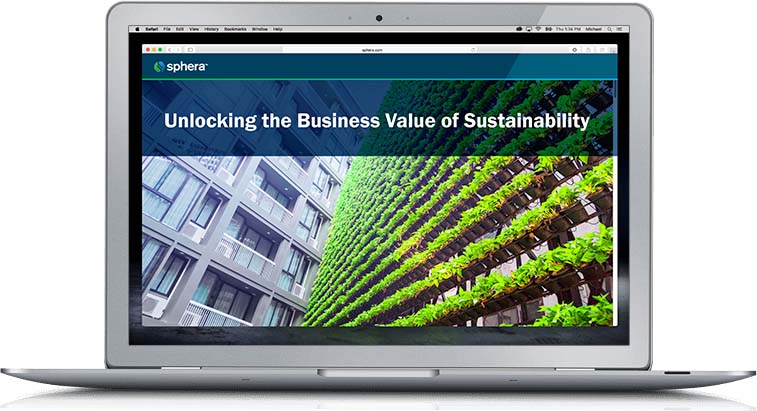If you’ve been tracking ESG regulatory developments this year, you’ve been busy. The EU is at the forefront of regulatory and policy activities designed to protect the environment and mitigate climate change. Recently, the EU effort has been most visible in the Corporate Sustainability Reporting Directive (CSRD) and its European Sustainability Reporting Standards (ESRS). The U.S., while still catching up, has taken a big regulatory step forward through the climate-related disclosure requirements proposed in March by the Securities and Exchange Commission (SEC). The concept of double materiality features in both sets of requirements.
The CSRD reporting standards are slated for formal approval and adoption in October this year, and the SEC requirements may go into effect as early as December. As companies come to terms with these reporting requirements, they need to ensure that their approach to sustainability reporting encompasses the climate-related risks and opportunities presented by climate change, as well as the impact their operations have on climate change and the environment.
What Is Materiality?
Merriam-Webster defines material in several ways—the most relevant definition being: “having real importance or great consequences.” The concept of materiality was first applied to investing when the SEC included it in the U.S. Securities Act of 1933, which aimed to ensure that material information—information that would impact an investor’s evaluation of a company’s stock—was provided to the public by issuers who sold securities. The Securities Act also wanted to ensure that securities transactions were not based on fraudulent information or practices.
Part One: Climate Change and Financial Value
As the term double implies, there are two parts to the double materiality concept. In line with the EU’s more action-oriented approach to climate change, European regulators devised the concept to accomplish two things. One aim is to capture and provide useful information on factors that can impact a firm’s financial value.
As it relates to ESG, and specifically to climate change and its effects, double materiality examines the potential impact of climate change on the financial health and outlook of a company. As an illustration, consider warming temperatures and rising sea levels and what these mean for the oil and gas industry.
In 2015, researchers from the U.S. Department of Energy and the Oak Ridge National Laboratory assessed the impact of sea-level rise and storm surge on U.S. energy facilities. The researchers noted that: “… an extensive amount of U.S. energy infrastructure is currently exposed to damage from hurricane storm surge. Furthermore, between 1992 and 2060, the number of energy facilities exposed to storm surge from a weak (Category 1) hurricane could increase by 15 to 67% under a high sea-level rise scenario from the recent National Climate Assessment.” The report provides greater detail on the implications of sea-level rise for the energy sector, but you don’t need more detail to understand the information’s value, particularly for investors and other stakeholders.
Part Two: Corporate Impact on Climate Change and the Environment
Our understanding of climate change is dynamic, and the consequences of climate change become more clear and more alarming as our understanding of it evolves. Though some nay-sayers want to believe that it’s a natural phenomenon, it is not. Climate change is driven by many factors, and our dependence on fossil fuels is at the top of the list. The Natural Resources Defense Council offers a simple explanation: “When we burn oil, coal, and gas, we don’t just meet our energy needs—we drive the current global warming crisis as well. Fossil fuels produce large quantities of carbon dioxide when burned. Carbon emissions trap heat in the atmosphere and lead to climate change.” Enough said.
The Corporate Climate Responsibility Monitor 2022 assessed 25 multinational companies and found that their collective, self-reported greenhouse gas (GHG) emission footprint in 2019 was equivalent to roughly 5% of global GHG emissions.
Investors, consumers and regulators are increasingly unwilling to turn a blind eye to these kinds of environmental impacts, and double materiality, when applied in regulatory frameworks, prompts corporates to disclose this information. Key components of these frameworks are the Scope 1, Scope 2 and Scope 3 emissions reporting requirements. They mandate reporting—based on defensible data—on a company’s direct (Scope 1) emissions, emissions from the purchase and use of energy (Scope 2) and supply chain emissions (Scope 3).
Some proposed reporting requirements go well beyond GHG emissions, with the CSRD’s standards calling for information on a company’s impact on water and marine resources, as well as biodiversity and ecosystems, among other things. The recently agreed CSRD rules mandate independent auditing of company reports, so it’s not to be taken lightly.
ESG Software and Data Are Essential for Compliance
The CSRD’s ESG reporting standards and the SEC’s proposed climate-related disclosure requirements are prominently fixed on corporate radar screens. As companies prepare for these new regulations, they’ll need to acquire intelligence, data and ESG software to support their compliance efforts. And these tools must enable companies to surpass a basic understanding of climate change and its implications for their financial health and outlook. Double materiality forces companies to understand and report these implications and own up to their impact on our environment in a more transparent way.










